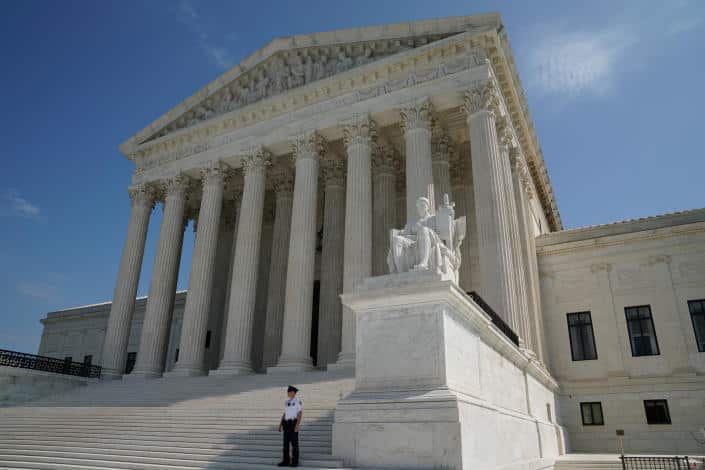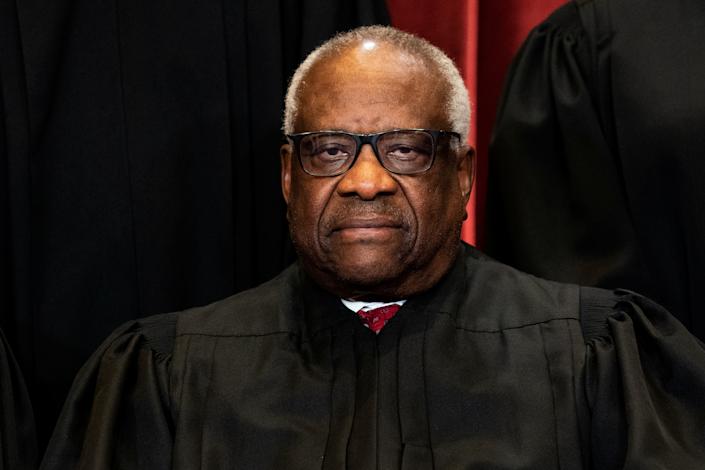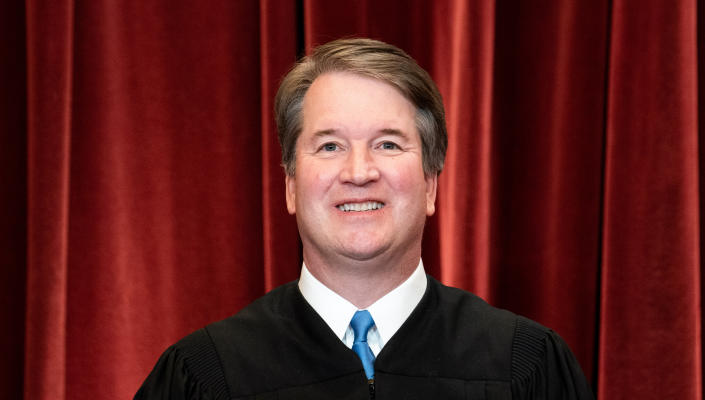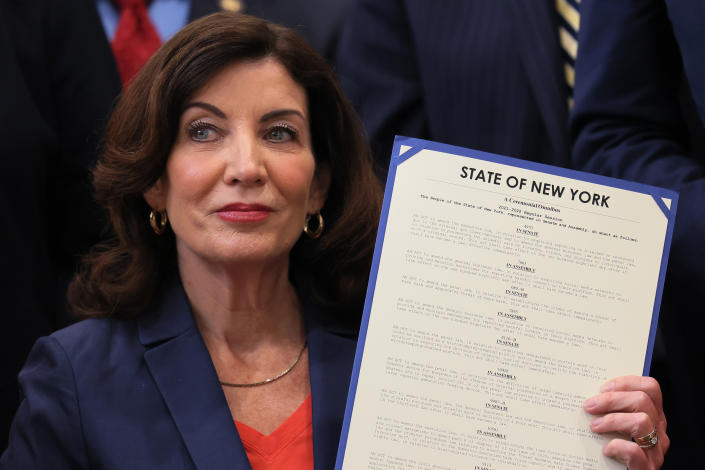
The Supreme Court on Thursday restrictions eased on carrying firearms in public, continuing a trend by the court in recent years to weaken gun restrictions.
The court’s conservative majority ruled 6-3 that New York could not bar gun owners from carrying their gun outside their home based on the state’s determination that the citizen lacked sufficient cause to fear for their own safety.
In case of New York State Rifle and Pistol Association v. Bruens was based on a lawsuit filed by two New York men who challenged a state law that requires them to have “good cause” or a special need to carry a firearm outside their home. The ruling will have a ripple effect for other states. with similar restrictionssuch as California, Hawaii, Maryland, Massachusetts, Connecticut, and New Jersey.
In Thursday’s ruling, written by conservative Justice Clarence Thomas, the court found New York’s good cause requirement unconstitutional. The court’s three liberal justices dissented.
The 6-3 ruling comes just weeks after one of the worst mass shootings in US history, in which 19 children and two teachers were killed by a young man wielding a high-powered rifle in Uvalde, Texas.
The decision was expected from arguments from last fallwhen it became clear that the six conservative justices they were skeptical of the state’s authority to determine who has “legitimate cause” and who does not.

“We are not aware of any other constitutional rights that an individual may exercise only after demonstrating to government officials any special need,” Thomas wrote in Thursday’s decision.
The Second Amendment to the Constitution states: “A well-regulated militia being necessary to the security of a free state, the right of the people to keep and bear arms shall not be infringed.” The plaintiffs in the New York case argued that state law restricts their right to “bear arms.”
But supporters of the law have said that public safety, especially in dense urban areas, is also a state government mandate. They argue that the states, rather than the Supreme Court, are better equipped to craft policies that balance gun rights with public safety concerns.
What was unknown was how much the Court would allow states to restrict guns in public places through other policies and laws, such as designating certain “sensitive places” as off-limits to firearms. The decision upheld the right of states to continue to limit or ban firearms in such places, but placed some limits on how broadly that term can be defined.
“It is true that people sometimes congregate in ‘sensitive locations’ and it is also true that law enforcement professionals are presumably often available in those locations. But expanding the ‘sensitive locations’ category simply to all places of public assembly that are not isolated from law enforcement defines the ‘sensitive locations’ category too broadly,” Thomas wrote.
Rather, Justice Brett Kavanaugh, one of six conservatives, wrote a concurring opinion, along with Chief Justice John Roberts, seeking to put some limits on the majority’s ruling. “Like most rights, the right guaranteed by the Second Amendment is not unlimited,” Kavanaugh wrote, citing former Justice Antonin Scalia, also a conservative, in an earlier gun case, District of Columbia v. Heller.

Kavanaugh said the court’s decision does not nullify or nullify licensing requirements currently in place in most states which “may require the license applicant to submit to a fingerprinting, background check, of mental health records and training in the handling of firearms and laws related to the use of force, among other possible requirements.”
Kavanaugh also cited from Scalia’s list of possible restrictions on the possession of firearms.
“[N]In our opinion, nothing should be taken to call into question long-standing bans on the possession of firearms by criminals and the mentally ill, or laws prohibiting the carrying of firearms in sensitive places such as schools and government buildings, or laws that impose conditions and requirements on commercial arms sales,” Kavanaugh quoted Scalia as saying. He included Scalia’s assertion of regulations and restrictions on “dangerous and unusual weapons” that are not in “common use.”
New York Governor Kathy Hochul replied immediately to the court’s ruling and focused on what his state will do within the scope of the new law. She outlined an approach that will specify how the state defines sensitive places, introduce a stronger permitting process, training requirements and rules for private property owners to designate their own limitations.
During arguments, the New York lawyers argued that the court should allow each state to make its own laws on the matter.

“The Anglo-American legal tradition has for centuries included limits on the public carrying of weapons, a tradition immediately imported into the colonies and one that existed to protect the public from harm,” Jeremy Feigenbaum, the attorney for the state of New Jersey, wrote last week. year. year.
“The simple truth is that what works in rural Alaska may not work in an urban center in New York or New Jersey, and state legislatures are much better placed to sift through local security evidence and listen to law enforcement. local orders than a single national court,” Feigenbaum argued.
But the lead attorney for the plaintiffs argued last fall that the court should change the state’s power to restrict the ability to carry firearms outside the home and limit the exercise of that right in certain spaces such as schools, government buildings, sports stadiums. and large public events.
“It is the difference between regulating a constitutionally protected activity and trying to turn a fundamental constitutional right into a privilege that can only be enjoyed by those who can demonstrate to the satisfaction of a public official that they have an atypical need for the exercise of that right. ”, plaintiffs’ attorney Paul Clement told the judges.
The majority of the court agreed with Clemente.
Reference-news.yahoo.com